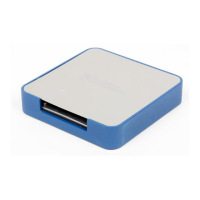© National Instruments | 2-33
NI SCB-68A User Manual
The application software must linearly convert voltage back to current. The following equation
demonstrates this conversion, where the resistor is the denominator and V
in
is the input voltage
into the DAQ device:
Selecting a Resistor for Current Input Measurement
For best results when measuring current, choose a resistor that has the following characteristics:
• Low wattage of approximately 0.125 W
• Precision of at least 5%
• Temperature stability
• Tolerance of 5%
• 232 Ω (suggested)
• AXL package (suggested)
• Carbon or metal film (suggested)
If you use the resistor described above, you can convert a 20 mA current to 4.64 V by setting the
device range to either (–5 to +5 V) or (0 to 5 V).
Adding Components for Current Input Measurement on
Analog Input Signals
Caution Do not exceed ±10 V at the analog inputs. NI is not liable for any device
damage or personal injury resulting from improper connections.
You can build a one-resistor circuit for measuring current at the single-ended or differential
inputs of the SCB-68A:
• Differential analog inputs—To build a one-resistor circuit that measures current at the
differential inputs of the SCB-68A, add the resistor to position E for each differential
channel pair that is used. Leave the 0 Ω resistors in place for positions F and G. Refer to
Table 2-1 for component positions for all analog input channels. Calculate the current
according to the following equation:

